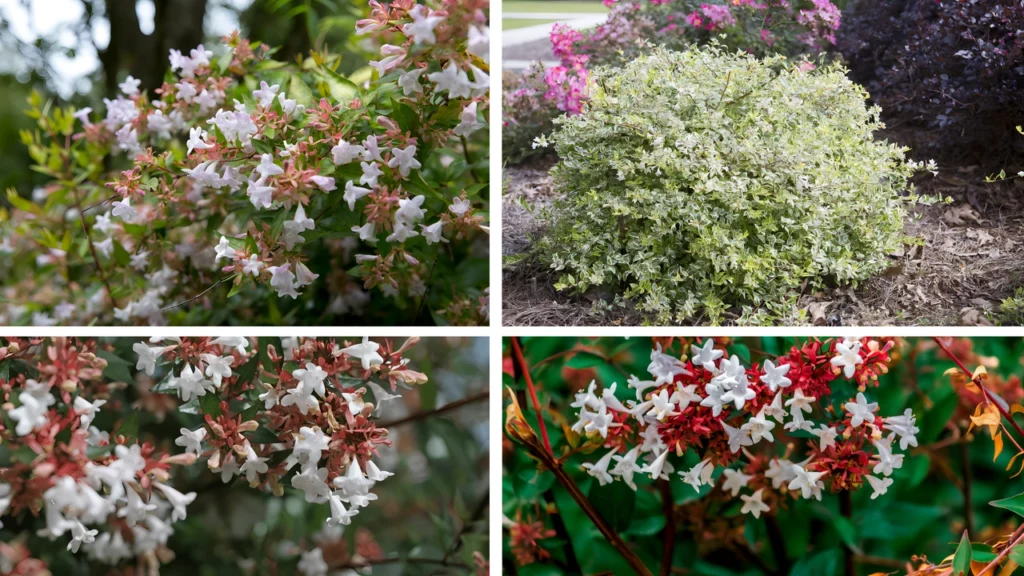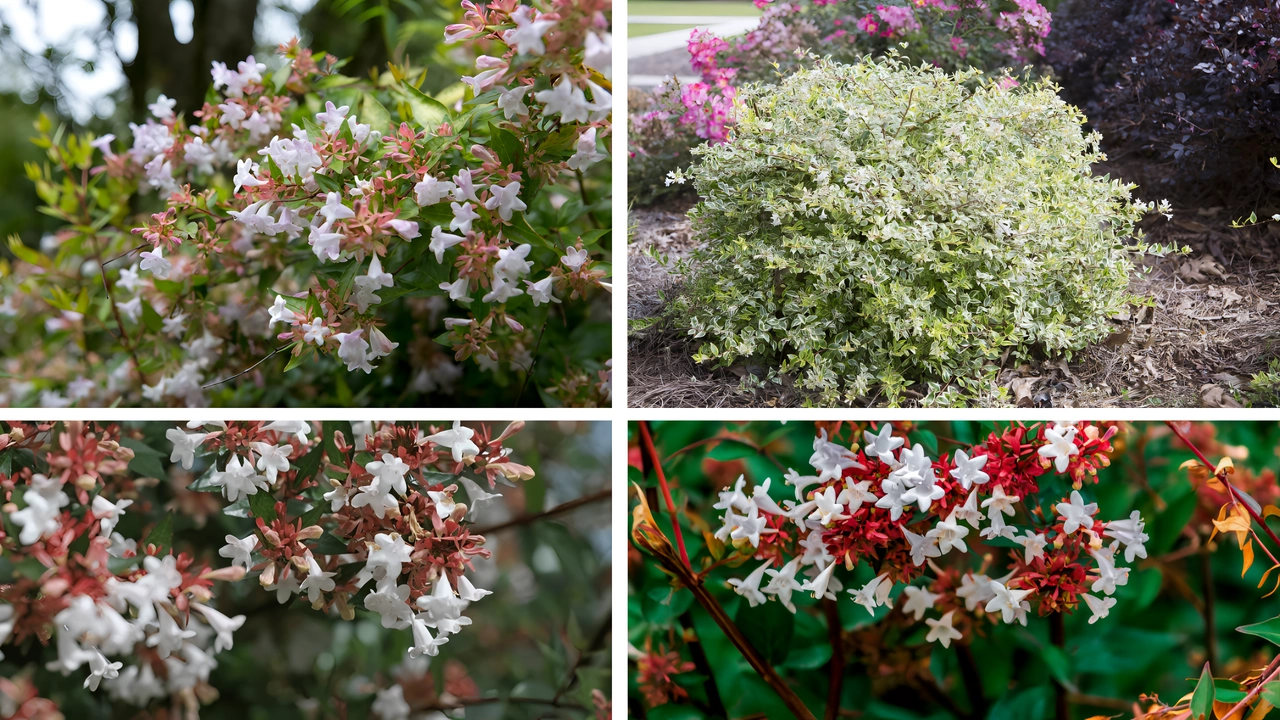Join on WhatsApp
Get the latest updates directly on WhatsApp – motivation, news & more!
The Abelia plant care guide is essential for gardeners looking to grow a vibrant, resilient, and ornamental shrub in their garden. Known for its graceful arching branches, glossy green foliage, and fragrant tubular flowers, Abelia is a favorite among landscape designers and home gardeners alike. Proper care for Abelia involves understanding its sunlight requirements, watering schedule, pruning techniques, and preferred soil conditions. Whether you’re planting Abelia as a hedge, a border shrub, or a standalone focal point, following the right growing practices will ensure it flourishes and remains a beautiful garden addition year-round.

Choosing the Right Variety for Your Abelia Plant Care Guide
When starting your Abelia plant care guide, the first step is selecting the right variety. Abelia comes in multiple types, including Abelia x grandiflora, Abelia ‘Kaleidoscope’, and Abelia mosanensis. Each variety offers unique characteristics—some are more compact and colorful, while others are better suited for large hedges. For instance, ‘Kaleidoscope’ Abelia features variegated leaves that shift colors with the seasons, making it a popular choice for decorative borders.
Choosing the right variety directly affects how you’ll approach growing and caring for Abelia, including its pruning needs, space requirements, and soil preferences.
Ideal Location and Sunlight Needs: A Must in Any Abelia Plant Care Guide
No Abelia plant care guide is complete without addressing sunlight. Abelia plants thrive best in full sun to partial shade, with at least 6 hours of direct sunlight daily. Sunlight not only promotes flowering but also enhances the vibrancy of the foliage. For variegated varieties, such as Abelia ‘Radiance’, more sun results in brighter color contrasts.
When planting Abelia, choose a well-draining spot where it won’t sit in standing water. Avoid overly shady locations, as insufficient sunlight may lead to sparse growth, fewer flowers, and leggy stems—key concerns in proper Abelia care and maintenance.
Soil and Watering: Critical Elements in Abelia Plant Care Guide
One of the most manageable parts of an Abelia plant care guide is soil compatibility. Abelia grows well in loamy, well-drained soil, though it can tolerate various soil types, including slightly acidic or alkaline conditions. Still, for optimal performance, enrich the soil with organic compost before planting.
Watering Abelia correctly is another vital care step. New plants require consistent moisture until well-established. Once rooted, most Abelia varieties become drought-tolerant but benefit from deep watering during hot, dry spells. Always water at the base to avoid wetting the leaves, which can reduce the risk of fungal issues.
Fertilizing Tips for a Healthy Abelia Plant (As Per This Abelia Plant Care Guide)
Fertilizing is a central point in any Abelia plant care guide. Abelia doesn’t require heavy feeding, but a balanced slow-release fertilizer applied in early spring will enhance growth and flower production. Avoid over-fertilizing, as this can lead to excessive foliage and reduced blooming.
Organic options, such as compost tea or fish emulsion, also work well if you’re looking to follow a more natural Abelia care routine. Always water after applying fertilizer to help nutrients penetrate the root zone efficiently.
Pruning and Maintenance: A Key Section in the Abelia Plant Care Guide
Regular pruning is not just optional—it’s crucial in the Abelia plant care guide. Prune in late winter or early spring before new growth starts. This keeps the plant’s shape tidy and encourages a flush of flowers in the growing season. Removing dead or damaged branches also improves air circulation and reduces the chances of disease.
For dwarf varieties, light shaping might be all that’s needed, whereas taller shrubs may benefit from more aggressive thinning. Proper pruning ensures your Abelia remains a beautiful garden shrub with year-round appeal.
Dealing with Pests and Diseases: Protecting Abelia Plant Care Efforts
Even the best Abelia plant care efforts can face challenges from pests or diseases. Fortunately, Abelia is relatively pest-resistant, but you may occasionally encounter aphids, whiteflies, or spider mites. These pests can be managed with neem oil, insecticidal soap, or introducing beneficial insects like ladybugs.
Fungal issues such as leaf spot may occur in humid conditions or if the foliage stays wet for too long. Ensuring good airflow, proper spacing, and watering at the base of the plant are effective preventive Abelia plant care techniques.
Propagation Techniques: Extending Your Abelia Plant Collection
No Abelia plant care guide would be complete without discussing propagation. Abelia is easily propagated through softwood or semi-hardwood cuttings taken in late spring or early summer. Dip the cuttings in rooting hormone and place them in moist, well-draining potting mix until roots develop.
Propagation is a cost-effective way to expand your garden and share plants with friends, making it a practical addition to any serious Abelia growing guide.
Seasonal Abelia Plant Care Guide
Throughout the year, your Abelia plant care will vary slightly depending on the season:
| Season | Abelia Plant Care Tips |
|---|---|
| Spring | Prune before new growth, fertilize, and check for winter damage. |
| Summer | Maintain watering, especially during dry spells; enjoy peak blooming. |
| Fall | Light trimming if needed; mulch around roots to insulate for winter. |
| Winter | Minimal care needed; protect young plants in colder regions with burlap or mulch layers. |
Following a seasonal Abelia care schedule helps keep the plant healthy and beautiful all year long.
Common Mistakes to Avoid in Your Abelia Plant Care Guide
- Overwatering – Too much water can lead to root rot.
- Lack of sunlight – Can stunt growth and reduce blooming.
- Improper pruning – Either too much or too little can affect shape and flowering.
- Neglecting pests – Ignoring early signs can lead to infestations.
- Wrong soil choice – Heavy clay or poorly draining soil can suffocate roots.
By steering clear of these pitfalls, your Abelia plant care guide will lead to consistently positive results.
Why the Abelia Plant Care Guide Matters for Garden Beauty
In conclusion, a comprehensive Abelia plant care guide empowers gardeners of all levels to cultivate a healthy, eye-catching shrub that enhances the charm of any outdoor space. With its year-round foliage, seasonal blooms, and low-maintenance nature, Abelia proves to be both versatile and rewarding. Whether you’re looking to fill a hedge, accent a walkway, or add color to your landscape, mastering the essentials of growing and caring for Abelia ensures long-term beauty and success.
By following these detailed Abelia plant care tips—choosing the right variety, providing proper light, ensuring healthy soil and watering, feeding appropriately, and performing seasonal maintenance—you’re well on your way to enjoying a thriving and beautiful garden shrub that stands the test of time.


